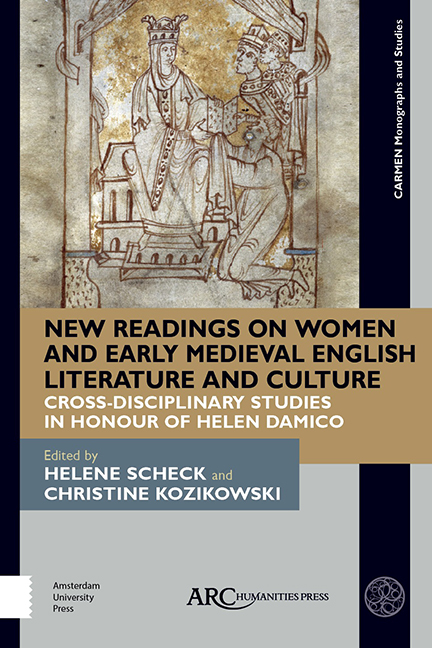 New Readings on Women and Early Medieval English Literature and Culture
New Readings on Women and Early Medieval English Literature and Culture Book contents
- Frontmatter
- Contents
- List of Illustrations
- List of Abbreviations
- Note from the Editors
- Introduction: Feminism and Early English Studies Now
- PART ONE LITERACY AND MATERIAL CULTURE
- PART TWO ENGENDERING MARRIAGE AND FAMILY
- PART THREE WOMEN OF THE BEOWULF MANUSCRIPT
- PART FOUR WOMEN AND ANGLO-SAXON STUDIES
- Select Bibliography
- Index of Manuscripts
- General Index
6 - The Circumcision and Weaning of Isaac: The Cuts that Bind
Published online by Cambridge University Press: 20 November 2020
- Frontmatter
- Contents
- List of Illustrations
- List of Abbreviations
- Note from the Editors
- Introduction: Feminism and Early English Studies Now
- PART ONE LITERACY AND MATERIAL CULTURE
- PART TWO ENGENDERING MARRIAGE AND FAMILY
- PART THREE WOMEN OF THE BEOWULF MANUSCRIPT
- PART FOUR WOMEN AND ANGLO-SAXON STUDIES
- Select Bibliography
- Index of Manuscripts
- General Index
Summary
THE WEANING OF Isaac is a subject that has received very little scholarly attention, and certainly nowhere near as much interest as the circumcision of Isaac, to which it is intimately related ritually, theoretically, and within the narrative context of Genesis. That said, it is precisely because they are so intimately linked that neither event can really be considered in isolation; the two must be studied together for a number of reasons. Firstly, weaning, like circumcision, is an act of cutting or rupture, and so the act of cutting is crucial to any analysis of either or both events. There is the cut of circumcision, the literal cut that figuratively binds father and son together, and the cut of weaning, the cut that conversely forever separates the body of the son from that of the mother. Secondly, in the story of Abraham and Isaac, both cuts are also related to the cut of exile, the cutting off of one part of the family from another, of one people and one church from another. However, exile is a state that is also shared by Abraham and both his wives and sons, again, a cutting off that simultaneously binds together. Thirdly, there is the cut of inscription. Physical circumcision is an inscription on the body, the sign of the name of God written into the flesh. The same is true of spiritual circumcision. Kathleen Biddick has argued persuasively that in his epistle to the Romans (2:28– 29), in the moment at which Paul “transformed the cut of circumcision to an inscription in the heart,” he created the cutting of the foreskin as a type for both Christian inscription and graphic technologies.1 The body is the book into which the word is written, but the foreskin is also a text, itself inscribed through erasure, through its excision from what has been written. And finally, there is the cut of translation. The Vulgate Latin story retold by the Anglo-Saxons in their mother tongue, Old English, is changed demonstrably and markedly in the retelling, cut apart from the language out of which it was translated, yet still bound to it through the story that is told. Language then, the mother tongue and the language of the mother that is silenced at weaning, figures prominently in this story.
- Type
- Chapter
- Information
- New Readings on Women and Early Medieval English Literature and CultureCross-Disciplinary Studies in Honour of Helen Damico, pp. 113 - 130Publisher: Amsterdam University PressPrint publication year: 2019


